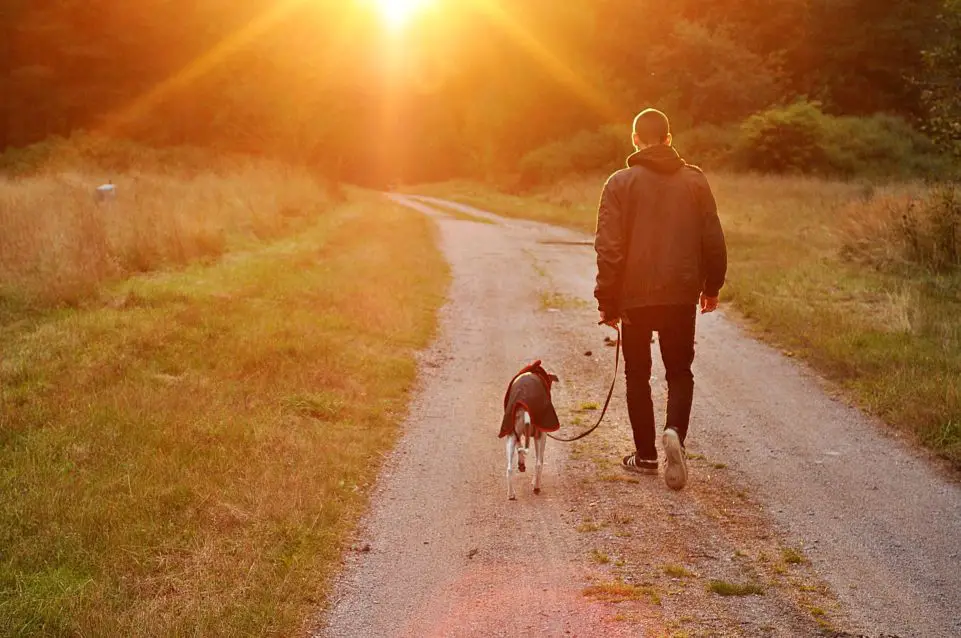Hello, my name is Valerie and I am the owner of a Clumberdoodle called Bentley.
A few days ago we were out walking and came across a notice taped to a lamp post in the village. It was asking if anyone had seen a dog who had become lost. The owner added a picture and all his contact details. Now, I found this very upsetting, particularly when I thought how I would feel if Bentley ever went missing.
I also got to thinking about how I would prove that he was mine, especially if he was found by someone else. Bentley is absolutely delightful and I could fully understand if he was found by a person who did not want to give him back to me.
So, I did some research and found out some very interesting facts about how I could prove that my dog does in fact belong to me.
Proving Your Legal Ownership
While buying or adopting a dog may seem a simple issue, there can be complications when it comes to dealing with ownership. It is every dog owner’s nightmare to think about losing their dog, and even more so in a legal battle.
There are some situations such as divorce which you can decide beforehand, but should your dog be lost and found by someone else, they may refuse to return him to you.
Legally, there are several things that you can do to ensure that your pooch comes back to you, and you have legal ownership of him.
Some situations where you may need to prove your ownership and maintain your legal ownership are:
- Your dog gets lost and is recovered by the animal shelter or humane society
- Your dog is lost and found by a family who wants to keep him
- You and your partner get divorced or part ways
- Someone claims your dog bit them and the local authorities remove him
How do You Prove That The Dog is yours?
 There are some things that you should do as soon as you buy or adopt your pooch. Doing them is a good start to proving that your dog really does belong to you.
There are some things that you should do as soon as you buy or adopt your pooch. Doing them is a good start to proving that your dog really does belong to you.
License your dog according to the local authorities where you live
Microchip him and make sure the information is up-to-date
Keep a copy of all his vaccinations in the glove compartment of your car. Keep the originals safe at home
Have a recent picture of you and your dog – taken together – in the glove compartment. Also keep a recent one with his paperwork at home.
My Dog Was Found and They Won’t Return Them…
Now let’s hope this doesn’t happen!
However, In this case you may even end up in court trying to get your pooch back. The court will need to determine whether you have violated any animal cruelty laws, or if you have abandoned, mislaid or lost your dog. Were you obeying the leash laws?
Should you be found to have abandoned your dog, you will lose your ownership rights. If the curt finds that you have lost or mislaid your dog, you stand a better chance of winning the case.
To mislay your dog implies that unintentionally you left your dog in a certain place. The owner of the place you left your dog then has no rights to your dog, so you will be able to take him home.
To lose your dog implies that you never intended leaving him at a certain place.
The difference between mislaying and losing your dog will become clearer with this example. If you and your friends have taken your dogs walking off leash, and your dog did not return, you would consider him to be mislaid.
If your dog dug under the fence and ran off, or jumped out of the care and ran off, he would be considered lost. In both instances the dog owner typically retains the right to the dog as long as you can prove that he does indeed belong to you.
My Dog is at an Animal Shelter
An animal shelter is legally obliged to look for you for a certain amount of time. This varies by location but is often as short as two days. After that time lapses the shelter has the right to sell, adopt or put your dog to sleep.
An adoptive pet parent will then be afforded adoptive rights to your dog and it will be almost impossible for you to get your dog back.
Because of these laws if you lose your dog, you need to contact any shelters in the area immediately and notify them that you are looking for your pooch.
If your dog is found to have a microchip he will have an extended time at the shelter before they dispose of him, so it is vital that the details on the chip are accurate.
Someone Claimed my Dog is Dangerous
If you are reported to a local authority as having a dangerous dog who behaves aggressively towards someone, you may be required to hand over your dog to the local authorities. You are not required by law to hand over your dog unless they produce a warrant or court order.
If you do hand over your dog without seeing a warrant, you are waiving your ownership rights and decreasing your chances of getting the dog back. You will then face a legal battle for custody.
What About Divorce?
While all pet owners think of their dog as a part of the family, in a divorce court he is simply considered to be property.
In a divorce, the court will consider all the Proof of Ownership documents before deciding who gets the dog:
Registration and license – A court will want to know who paid the fees and who registered the dog.
Veterinary records – Normally when you first take your dog to the vet, you will be asked for your own information and contact details. If one name is only supplied, there is a good chance that is who a court will award the dog to. If two names appear on the documentation the court will decide who gets ownership. Often this will be person who paid for most of the vet visits.
Microchip records – The person who has their name on the chip records will more than likely be awarded the dog.Pedigree details. A court will check with the Kennel Club or similar company in the country where you live. The name that appears on these forms will be granted custody of the dog. Should both names appear, then the court will decide who gets custody.
How would the court decide custody?
Unless both names appear on all the forms, the most mentioned name will get custody.
Other Ways to Prove Ownership
So, what about when I find my dog with another person. How would I prove to a court that he’s mine? There are some precedents which will determine you as the owner.
Your description of his behaviour. Have you taught him a special trick. Is there something that he will only do for you?
Describe any identifying marks. Does he have a scar anywhere? Has he lost a tooth? Does he have a small mark under his chin?
Use his original name. Remember that the family who have adopted your dog have made up another name for him. Does he react to you when you call him by his real name?
DNA. Most pet owners have a brush for their dog. There will always be residual hair left on it and this can be traced to your pooch.
Photographs, along with vet records with your name on the receipts will go a long way to proving that your dog belongs to you.
The Final Decision
This process then takes on the same consideration as when a child is awarded to one or other parent. A court will consider the best interests of the dog.
- How much time does each person have to devote to the dog?
- Where will the dog live?
- Who is more capable of paying the vet bills in the future?
- Is there a history of drug abuse and violence for either party?
- Who can prove deeper involvement with the dog? This includes things such as grooming, walking, and training.
Final Thoughts
 I hope you have learned as much about this subject as I have. While no pet owner ever wants to think that their pooch may get lost or stolen, there is always the possibility that your dog gets scared (maybe from fireworks) and runs off.
I hope you have learned as much about this subject as I have. While no pet owner ever wants to think that their pooch may get lost or stolen, there is always the possibility that your dog gets scared (maybe from fireworks) and runs off.
One a quick side not, if you’re dog if scared fireworks or thunder, check out our article here!
One thing I found out is that ownership also depends in how long you keep searching for your dog. If you stop after a few days and he is later found with someone else, you may not get him back – horrible thought!
So, as you can see, it is no easy feat to prove that your dog actually belongs to you. It is vitally important that you keep all his paperwork up-to-date and at hand should you need to provide proof of ownership.

